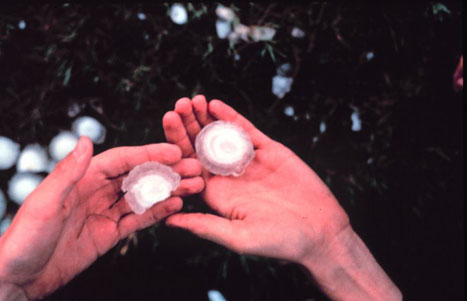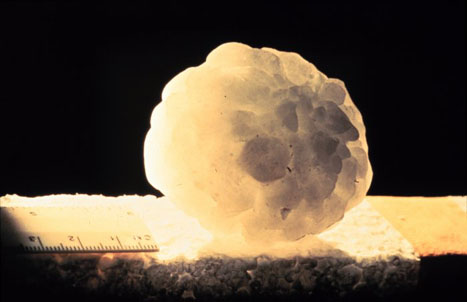|
|
|
|
Hail is a form of precipitation that occurs at the beginning of thunderstorms. Hailstones are nearly round pellets of ice and snow, usually built up in layers. Hail is formed when raindrops pass through a belt of cold air on their way to earth. This belt of cold air causes the raindrops to freeze into small blocks of ice. Hailstorms can cause a lot of damage to crops, and if the stones are big enough, they can even kill animals and people. |
|
You need clouds like cumulonimbus, with strong updrafts, to make hail. Hailstones only starts as single raindrops, which freezes, then is carried up in the cloud by a strong current to the level where rain is still falling as drops. Here, new raindrops may cling to the frozen hailstone, making it bigger. The frozen blocks of ice fly up the cloud in the updraft until they get too heavy, and then fall. The more times they go up and down inside the cloud, the more layers of ice build up, and the bigger the hailstones grow. |
 |
 |
In the photo above, a big hailstone has been cut in half, and you can see the different layers that have built up. The size of hailstones can range from pieces with a diameter of 5 millimetres to 13 centimetres. A hailstone can even weigh up to 450 grams. This hailstone on the left is built up from lots of smaller stones that have combined and frozen together. |
